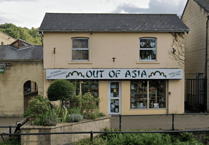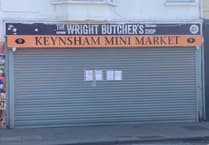In our spaces managed for wildlife, our nature reserves, protected sites and land farmed more sensitively for nature, our skylark’s biggest threat is through disturbance, either by dogs or people. To help highlight the plight of the skylark and to help people understand that these spaces are home to such rare and beautiful creatures, the Mendip Hills AONB Service has commissioned BLAGSAEY Arts CIC to create several willow and paper skylarks to install at one of our iconic skylark sites, Deer Leap reserve.
These lovely sculptures are out on site, nestled in the grass or flying through the air, and we hope they will remind people to watch out for these iconic birds, and that at this time of year it is essential to keep dogs on leads, so that ground nesting birds such as the skylark can breed successfully and begin to recover their numbers.
On the Mendip Hills we are lucky enough to have skylarks living with us all year round, but now is the time of year that they become most noticeable in our landscape. So why might you notice this little brown bird now?
The skylark is best known for its eye-catching fluttering and ascending flight, sometimes climbing as high as 1,000ft into the sky, which ends with them parachuting back to the ground. This flight is accompanied by a complex and beautiful song, made up of ‘syllables’ (a consecutive grouping of intricate sounds), which can contain as many as 300 combinations without a repeat and can last as long as an hour! These two facets together make the skylark one of our most loved grassland birds and has made them the muse for poets and songwriters throughout our history.
The skylark is beautiful to hear and see, yet its breeding and nesting strategy is not the brightest!
As they nest on the ground in grass height between 20-50cm tall they have always been prone to disturbance and predation. Many animals eat skylark eggs, from stoats to hedgehogs and even herbivores such as deer and sheep, and their chicks are equally tasty! This means that a skylark must breed 3-4 times a year, between April to September, to ensure population survival.
This species has been in critical decline and is now classed as threatened and red (highest level) in the bird conservation list, due, in large part, to our changes in land management practices.
On arable farmland, the change to autumn sown crops dramatically reduces the nesting opportunities, resulting in only one breeding attempt per year, and the change from hay making to silaging (harvesting the grass every six weeks) for livestock means nests are often destroyed or exposed to predation.
Altering management practices by, for example, leaving wide uncut field margins and ‘skylark plots’ can help reduce this impact. In the last 50 years the population of this bird has fallen by 75% (according to the RSPB) and it has disappeared entirely from some areas of the UK. This is why it is one of the Mendip Hills AONB’s ‘Champion Species’.
“This species has been in critical decline and is now classed as threatened in the bird conservation list.”





Comments
This article has no comments yet. Be the first to leave a comment.